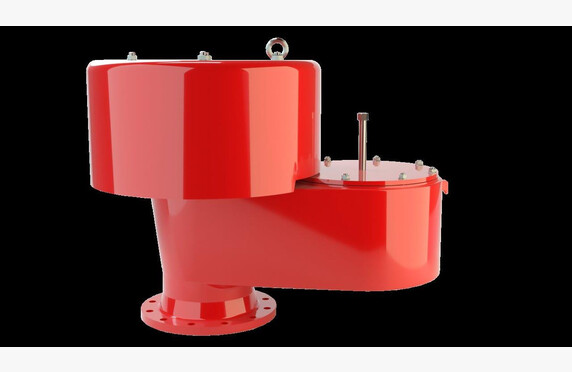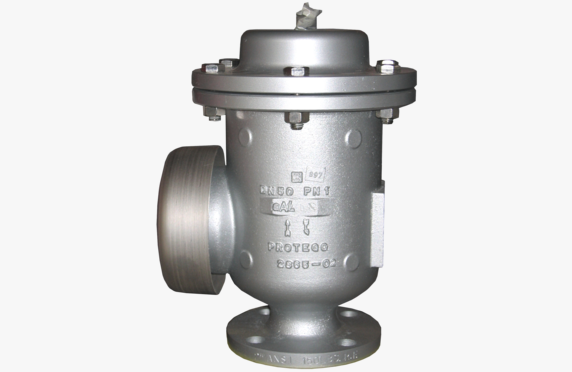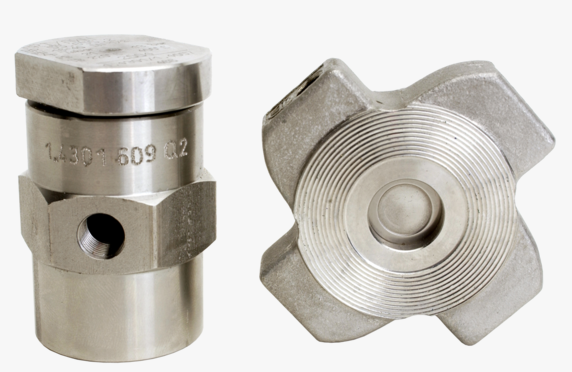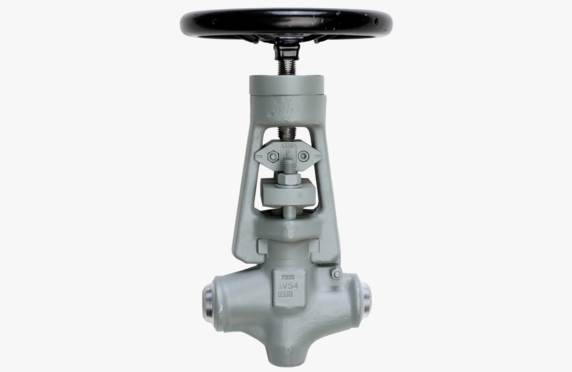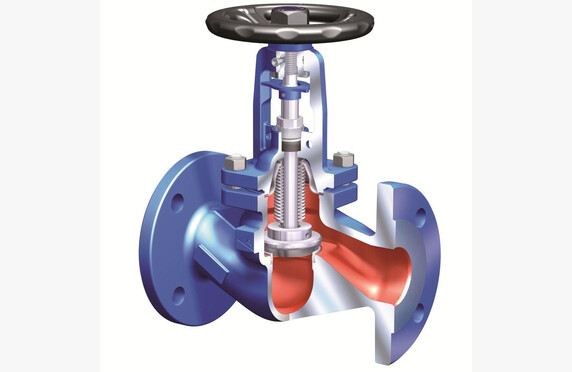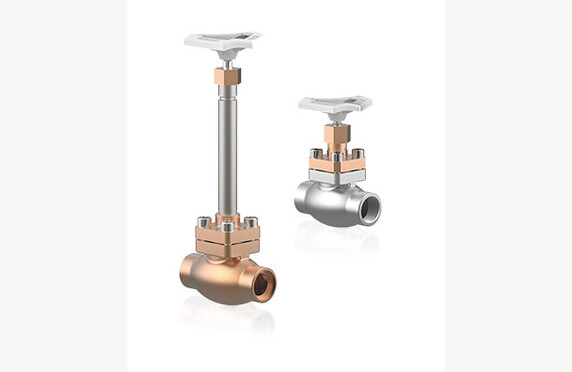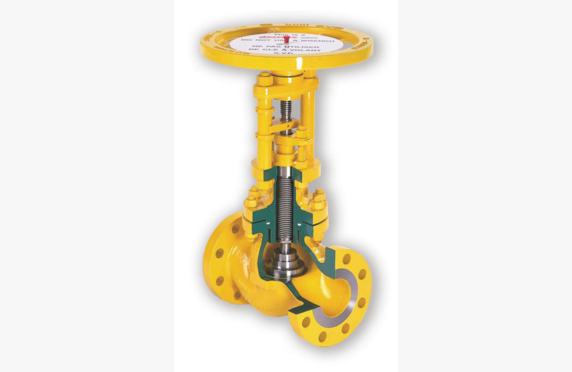Pressure and vacuum relief valves
Pressure and vacuum relief valves
Media
Manufacturers
Technical specifications
Sizes: DN 10-700
Pressure classes: PN 6-40
Materials: GGG 40, GS-C25, steel, stainless steel, acid-resistant steel, AISI 304, AISI 316, Hastelloy
Connection types: flanged, threaded
Other names: breathing valve, tank breathing valve, overpressure valve, underpressure valve, vacuum valve, pressure relief valve, pressure vacuum relief valve
What are pressure and vacuum relief valves?
The pressure and vacuum relief valve equalizes the pressure fluctuations occurring in the process. The process is designed to operate within certain limits, and if these are exceeded, the function of the overpressure valve is to release the excess pressure, and similarly the function of the underpressure valve is to relieve vacuum by introducing air at normal pressure into the process. The overpressure valve operates like a safety valve (link to safety page), but it is presented separately because, when an over- or underpressure valve is installed as the tank breathing valve, the set pressures are very low, and therefore the valve’s design differs greatly from that of a conventional safety valve.
At the end of the page, we present our underpressure valve solution separately.
Tank vent valves, also known as breathing valves
Inside large terminal tanks there is a continuous rise and fall in pressure as a result of changes in the outdoor temperature. The same occurs when tanks are being loaded or unloaded. These pressure fluctuations are equalized by what are called breathing valves or over- and underpressure valves, whose set pressures are typically only a few tens of millibars.
Various large tanks could be built so robustly that they would withstand, for example, the temperature fluctuations caused by changes in outdoor air as well as the pressure fluctuations generated during pumping and loading phases, but that is not economically justified. It is more cost-effective to install an over-/underpressure valve, i.e. a breathing valve, on top of the tank.
Breathing valves can be installed on top of the tank, allowing it to breathe ambient air and also draw in makeup air or line air, whereby the outlet gases are routed, for example, to a collection tank.
The valves can be arranged to have a complete vapor barrier so that, for example, the outlet gases from sulfur or bitumen tanks do not disturb the valve diaphragm but are expelled as gas.
Selection of the tank vent valve
We want to highlight three arguments when a purchasing decision is being made.
The first is tightness.
This is important because the tank contains intermediates that are harmful to the environment and, moreover, are valuable. The video below concretely demonstrates the significance of tightness.
The second competitive advantage in the PROTEGO range is the high-rise diaphragm construction, which allows the valve to be set to open only 10% before it must be fully open. In this respect, the breathing valve differs from a safety valve, meaning that for tanks’ over-/underpressure valves operating at low pressures, it is important that the valve is 100% open at the design pressure. The set pressure is then calculated retroactively from this.
In so-called traditional models, the valve begins to open 40% (or in certain models 100%) before reaching full open position. Thus, when the conventional valve starts venting gases to the outdoor air, the high-rise construction of the PROTEGO valve keeps it closed. For example, when using nitrogen, it is important that expensive nitrogen gas is not unnecessarily vented to the outside.
Among other things, we demonstrate this feature in the video below.
Ease of Maintenance as the Third Purchasing Criterion
When it comes to a tank safety device, it is important that the equipment is also well maintained. Almost every year in Finland there are unfortunate news stories about tanks that have failed because, for example, the retaining bow had become adhesively stuck to the seat.
Our maintenance and installation services also perform annual inspections and repairs for you if desired.
Similarly, our sales team assists with equipment selection. In the case of breathing valves, not only is proper sizing extremely important, but also the choice of equipment. The PROTEGO range is extensive and includes solutions for, among other things, cryogenic and extremely cold intermediates.
Likewise, for sticky intermediates such as styrene, there are dedicated solutions.
And naturally, references from Finland can be found for all of these.
Breathing valves can also be equipped with an integrated flame arrester. Read more about flame arresters.
In the brochure the combination of an over-/underpressure valve and a flame arrester is presented.
Also listen to a 30-minute webinar on the subject Tank Breathing Valves
Interested? We are happy to provide additional information and complimentary small-scale training via the Teams application.
Underpressure Valves
Over- and underpressure can occur in any process, and depending on the process parameters, different protective measures can be taken. A safety valve (link to safety page) can be installed on the line, or an overpressure can be controlled by a self-acting pressure hold valve (link to pressure hold valve page).
An underpressure situation in the process can occur, for example, in oversized heat exchangers when steam condenses rapidly, and at the same time a possibly oversized control valve closes completely. When the natural pressure difference in the system becomes negative, it is exposed to water hammer when condensate removal stops. In some cases, a vacuum protection may function as a problem solver in such situations.
In this case, the underpressure valve can be spring-loaded, so that the valve opens when the vacuum exceeds a predetermined limit, allowing makeup air into the device.
Download Brochures

PROTEGO Pressure and Vacuum Relief Valves In-Line
Lataa PDF
PROTEGO Flame Arresters, Valves and Tank Accessories
Lataa PDF
PROTEGO Pressure-Vacuum Relief Valves with Flame Arrester
Lataa PDF
PROTEGO Pressure-Vacuum Relief Valves with Flame Arrester End-of-Line
Lataa PDF
PROTEGO Pressure-Vacuum Relief Valves End-of-Line
Lataa PDF
Niezgodka Typ 90 Vacuum and Pressure-Relief Valves
Lataa PDF
Niezgodka Typ 91 Vacuum Relief Valves
Lataa PDF
Niezgodka Typ 98 Safety Valves
Lataa PDF
GESTRA RK86, RK86A, RKE86, RKE86A Non-Return Valves
Lataa PDF
ARI-Armaturen CONA 655 Vacuum Breaker
Lataa PDF
ARI-Armaturen CONA
Lataa PDF